Breakfast Around the World: A Global Journey
Jun 20,2019
Breakfast Around the World: A Global Journey
Jun 20,2019
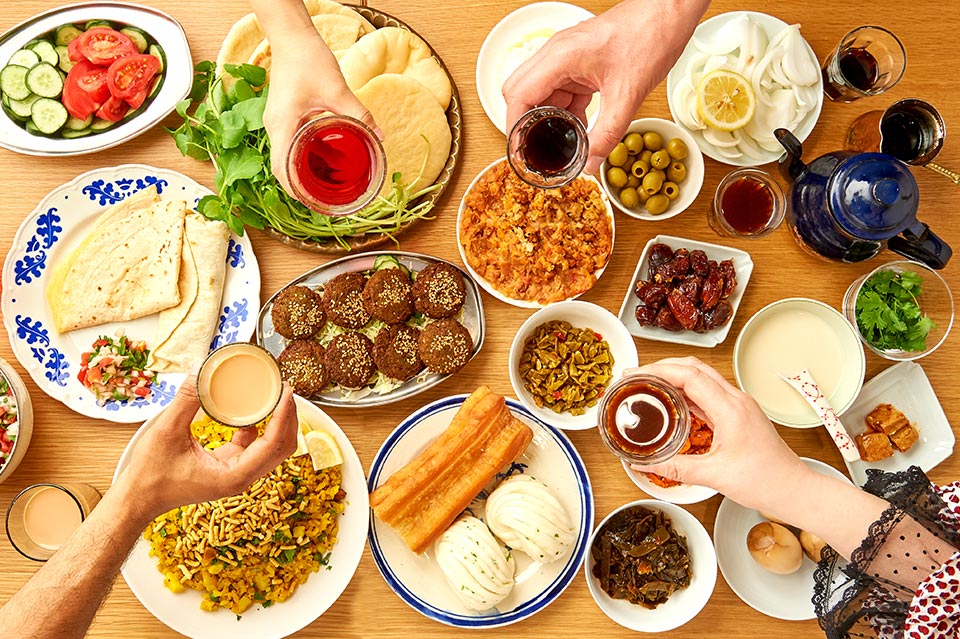

Starting the day with a delicious breakfast energizes both the body and the spirit. The image of the traditional Japanese breakfast is rice, miso soup, and grilled fish. Regions around the world, naturally, have their own long-established and beloved breakfasts that are strongly colored by the region’s culture and climate. For this article, we held a breakfast party with residents of Japan originally from Egypt, Mexico, India, and China, who made and shared breakfast dishes from their homelands. By talking about breakfasts, we obtained a view of the morning landscape in each country.
The participants laid out the ingredients and seasonings they had brought and then started cooking. The kitchen was filled with aroma of spices and herbs, and the table was covered in colorful packages labelled in many different languages. Some had even brought treasured herbs and seasonings all the way from their hometowns. Everyone showed off their cooking skills, as they tried to recreate the nostalgic tastes they loved when they were kids.
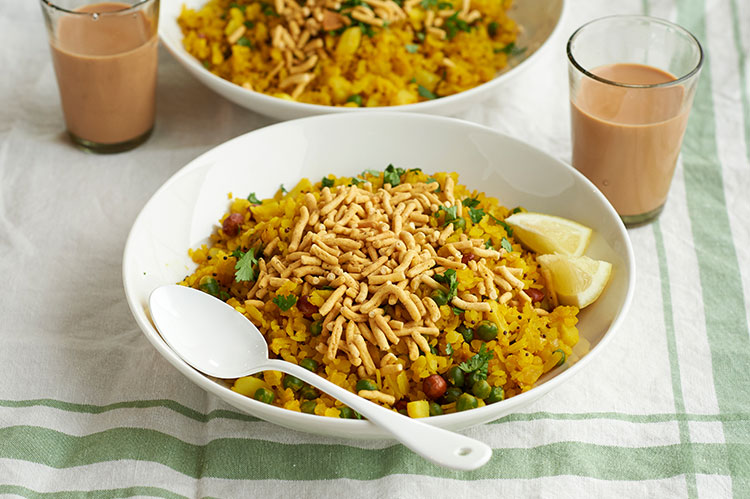
Triwedi Shubhan , who hails from Uttar Pradesh in northern India, prepared a dish called poha. Poha is rice flakes made of parboiled rice that has been flattened and dried. To cook poha, the rice is rehydrated in water and stir-fried with vegetables and spices.
“The best known Indian dishes are curry and chapati [unleavened flatbread made from whole wheat flour], but they are usually eaten for lunch or dinner. Most people eat something simpler and lighter for breakfast. Of these, poha is one of the most widely eaten breakfast dishes because it is easy to make and light on the stomach.”
Potatoes, onions, and green peas are cooked, and then the poha, which has been soaked in water beforehand, is added and stir-fried. Mustard seeds, turmeric, and other spices are then added to the mixture, and finally the dish is topped with fried peanuts, cilantro, spicy flakes, and lemon.
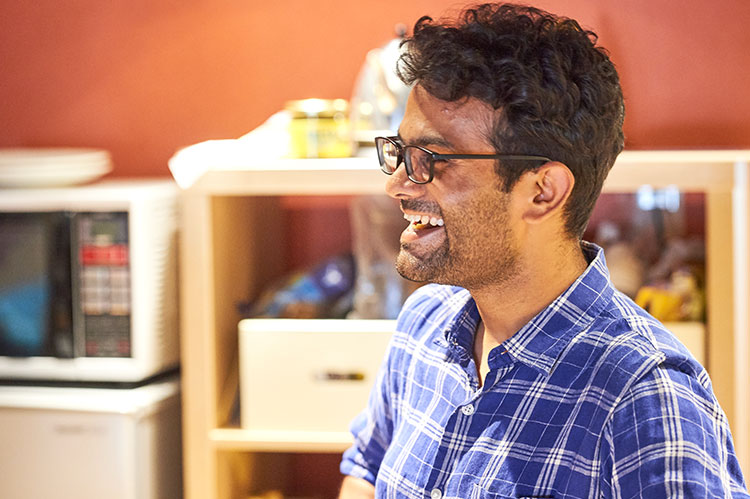
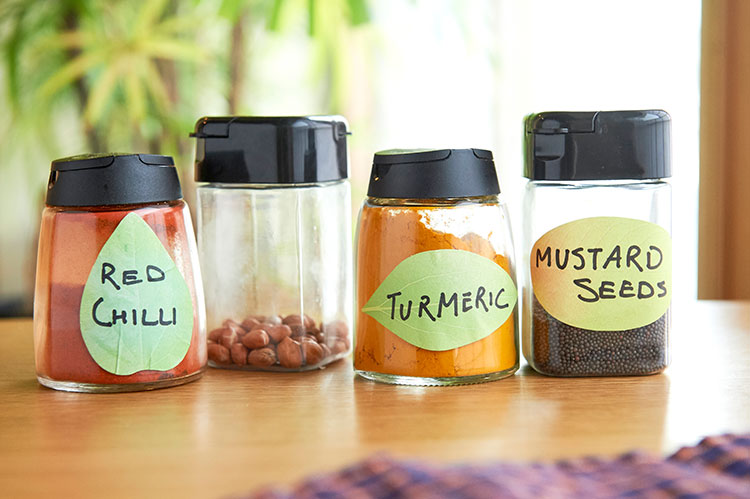
“Poha is like an Indian fast food, and you can buy it at street stalls. In the morning, we also eat sandwiches made with potatoes or beans cooked with spices on Indian bread called paratha as well as samosas [a pastry with a shell formed from flour and water, filled with cooked potatoes or beans and then deep fried].”
And no morning in India is spent without chai. Chai is made by boiling black tea with ginger, cardamom, and other spices, and adding plenty of milk. Each household is said to have its favorite chai recipe. “To be honest, though, I don’t drink much chai,” Shubhan said with a laugh. “But my father and mother always have chai first thing after they wake up.” Despite his protestations, he was very skilled at making chai.
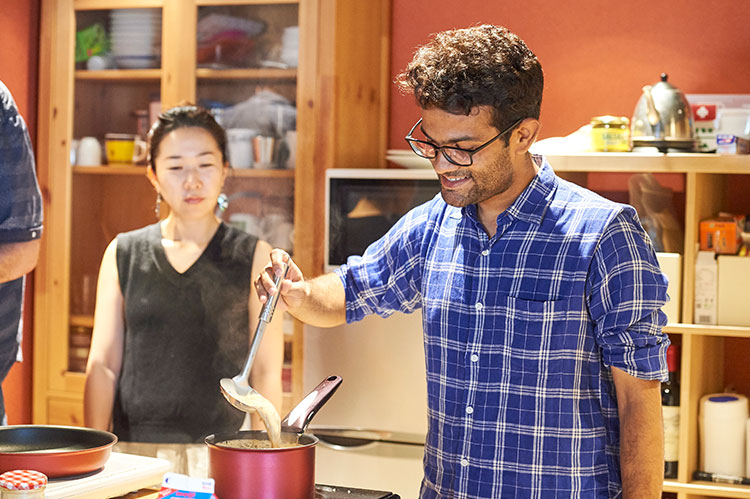
“When boiling the milk, it will easily boil over, so be sure to remove the pot from the heat just before it boils over. Let it cool down and then bring it back to a boil. The trick is to repeat this at least three times. This is how you make delicious chai.”
Shubhan attended graduate school in Japan and now works here. Because he lives on his own, his go-to breakfast is a sandwich and coffee.
“My mother in India made me a different tasting dish every morning using various spices and ingredients. For sure, I sometimes miss my mother’s breakfasts.”
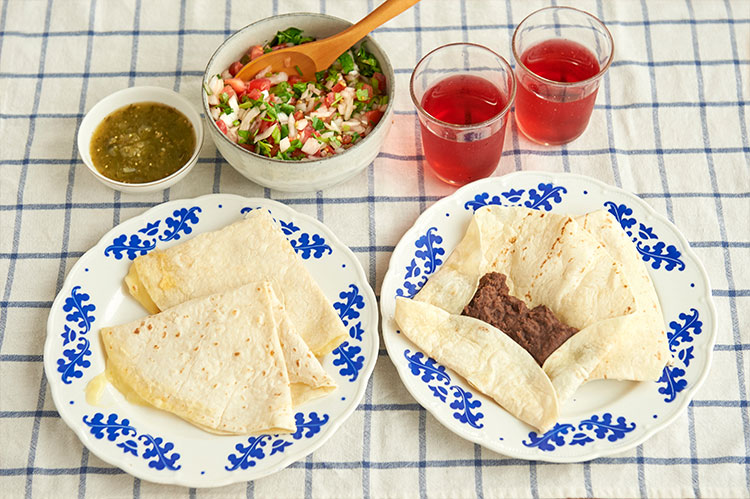
“Mexicans’ mornings begin with tortillas and salsa,” Juan Carlos Pinto Marquez , a native of Zacatecas, Mexico, informed us. On this day, he carefully warmed up flour tortillas on a frypan and then filled them with melted cheese to make quesadillas. He also made frijoles burritos, made with black beans (frijoles) very similar to adzuki beans, and two kinds of salsa.
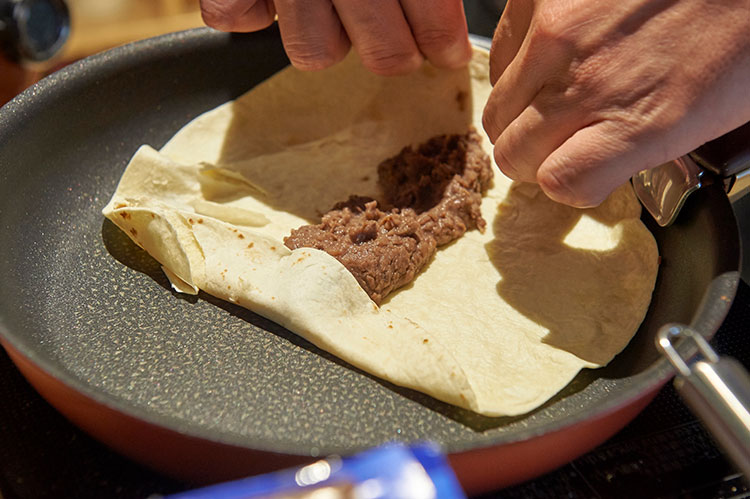
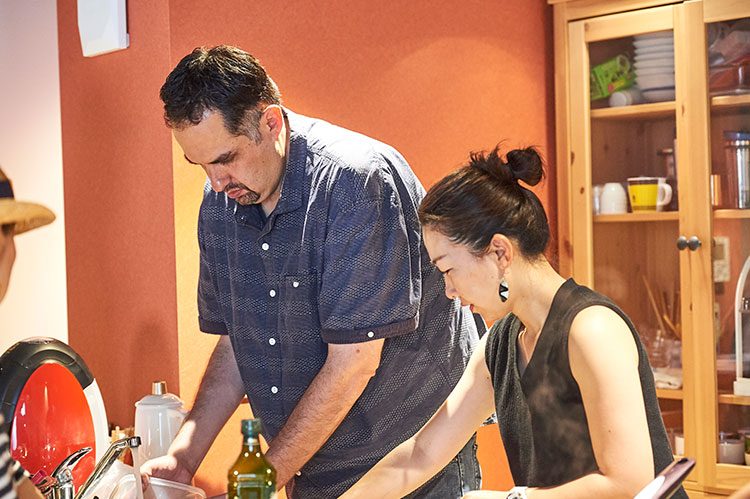
Salsa sauce is an essential part of Mexican cuisine. Salsa literally means “mixture”. For the event, Carlos made the classic pico de gallo salsa, which is made using finely chopped onions, tomatoes, cilantro, and chilies, and salsa verde, which is made with tomatillos, jalapenos, garlic, and other ingredients.
“For Mexicans, a meal without salsa is unthinkable. Some restaurants offer more than 20 different kinds of salsa. Each family has its own signature salsa, and we have competitions to see who can make the best salsa, the mother or the daughter-in-law. [laughs] Many salsas are spicy because they are made with chilies and jalapeños. We start putting jalapeño pickles in the teeth of Mexican children when they turn one year old so they gradually get accustomed to the spiciness. By the time they enter elementary school, they have a Mexican palate that loves salsa.”
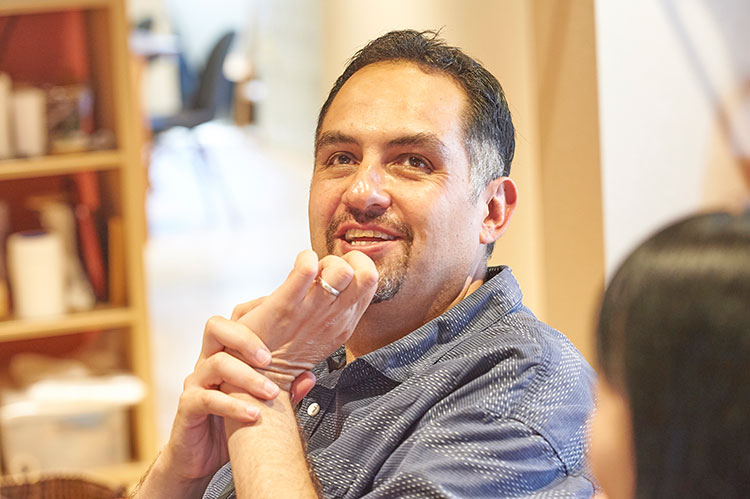
When asked what people in Mexico usually drink in the mornings, Carlos replied: “We drink coffee and tea, but we also like chilled hibiscus tea with sugar or herbal teas like chamomile tea.” When asked what he likes best, Carlos said shyly, “Actually, my favorite is chocolate milk.”
Some families make tortillas by hand, but one of Carlos’ joys is going out to buy tortillas at stores known for their delicious offerings.
“Tortillas can be made from corn flour or wheat flour. Mexicans love tortillas made from corn flour, but they can be a little heavy. That’s why in my family, wheat flour tortillas were the go-to in the mornings. You can buy freshly baked tortillas when you go to a tortilla shop. While waiting for them to bake, I would get impatient and ask for just one tortilla right away and eat that along with salsa from the store as I waited. That is the most delicious thing ever.”
Seeing Carlos express their deliciousness with a beaming smile, it’s easy to understand just how important tortillas and salsa are to Mexicans.
“Tortillas and salsa are the soul food of Mexicans,” Carlos concluded.
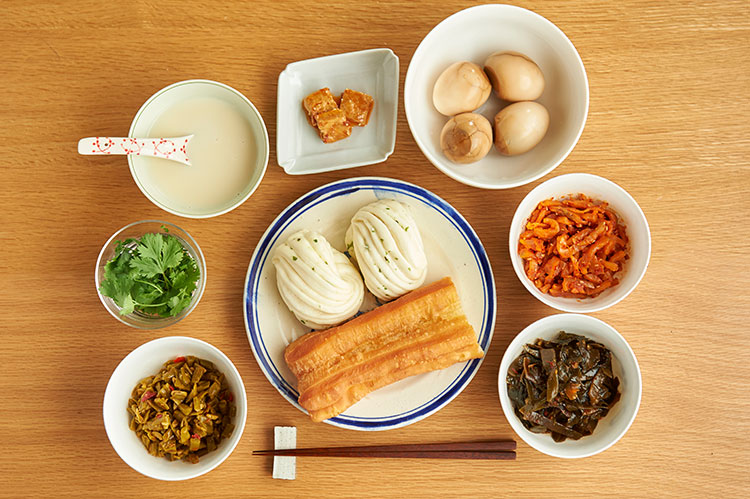
Kawarai Kimiko , whose father is Chinese-Japanese and whose mother is from China, was born in Jiangxi, China, and came to Japan when she was 10 years old. For her, the taste of a Chinese breakfast is indelibly connected to the cooking of her Chinese grandmother with whom she lived.
“When I was a child, breakfast was usually rice porridge, huā juǎn [a kind of steamed bread made with wheat flour], deep-fried bread, soy milk, and tea eggs, as well as pickles and tofuyo [tofu fermented with koji [rice bran] mold].”
Kawarai’s grandmother made her own tea eggs, pickles, and tofuyo. To get through the cold winters, many foods are salty and spicy, a characteristic of traditional Jiangxi cuisine. The salty and spicy pickles and tofuyo made by her grandmother were the perfect taste to compliment rice porridge.
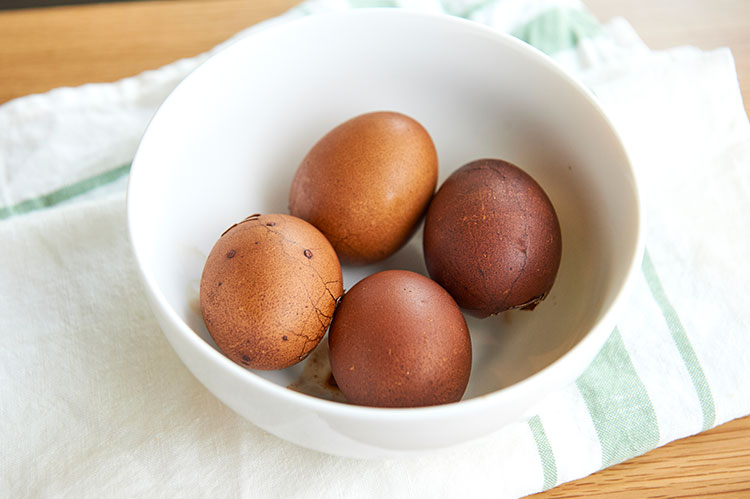
To make tea eggs, start with hard-boiled eggs, roll them to crack the shells so the flavors can soak in, and then marinate them in tea, star aniseed, soy sauce, and other seasonings. “I can’t make tofuyo or pickles like my grandmother, but I make tea eggs at home,” said Kawarai.
“I remember going out in the mornings to buy freshly made huā juǎn, deep-fried bread, and soy milk. Eating freshly deep-fried bread dipped in warm soy milk is a staple for breakfast in China.”
Kawarai also loves wontons and the thick rice vermicelli often eaten in Jiangxi.
“Rice vermicelli stir-fried in pork back fat is such a delicious taste that I’ll never forget. I used to go out to a restaurant in the mornings with my family to eat it.”
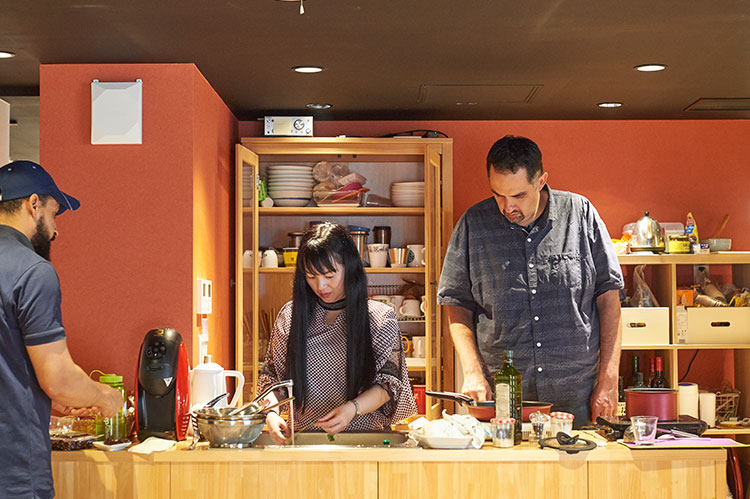
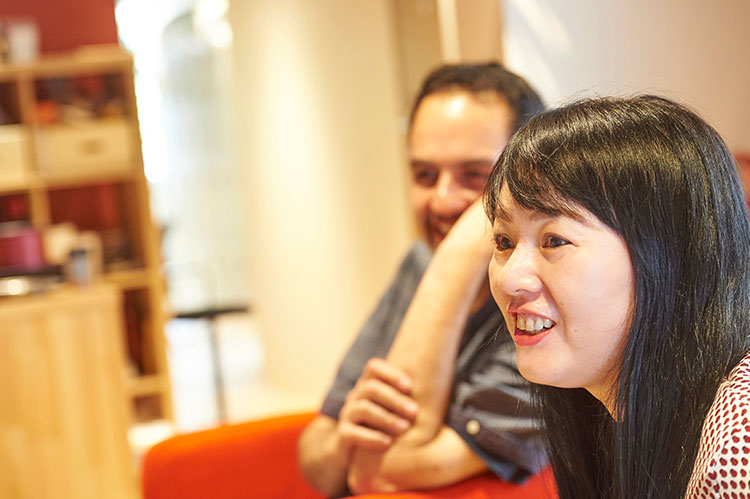
Kawarai grew up in a mountainous area of Jiangxi. It’s an area where age-old morning vistas still remain, but these days, they are changing little by little.
“I remember that when I was little, very few people ate bread. But nowadays people are increasingly adopting Western food culture, and many bakeries have opened up in the city centers. Also, Chinese people love tea, but there are more and more coffee chains and many people prefer coffee. Generally, though, I think people drink coffee at cafes and other places while drinking tea at home. I’ve been living in Japan for a long time now, so I don’t often have a typical Chinese breakfast at home, but I still can’t live without soy milk. It’s such a familiar taste I grew up with. I would rather drink soy milk than milk in the morning.”
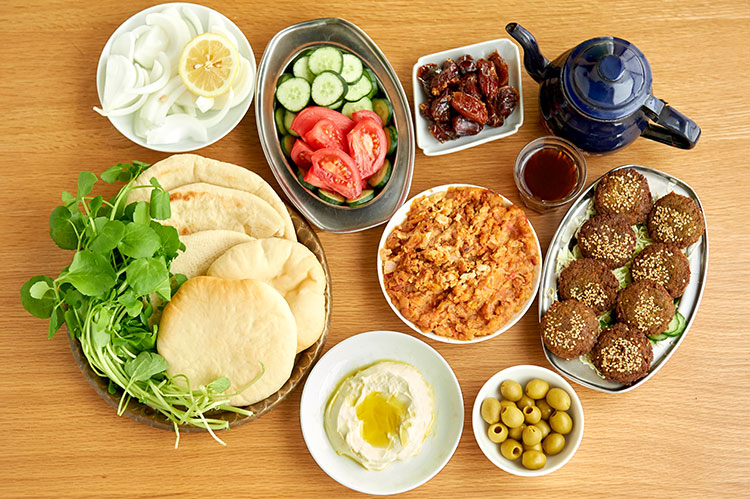
Ahmed Mahmoud , who grew up in Ismailia, Egypt, presented his breakfast to us, saying, “Egyptian mothers cook a lot in the morning.”
“The typical Egyptian breakfast consists of pita bread, fava bean tameeya [a type of falafel — a chickpea croquette eaten in the Middle East and elsewhere], foul medames — a stew made using fava beans, cheese drizzled with olive oil or home-made butter, and a sesame paste called tahini. These are served with vegetables like cucumbers, tomatoes, and watercress.”
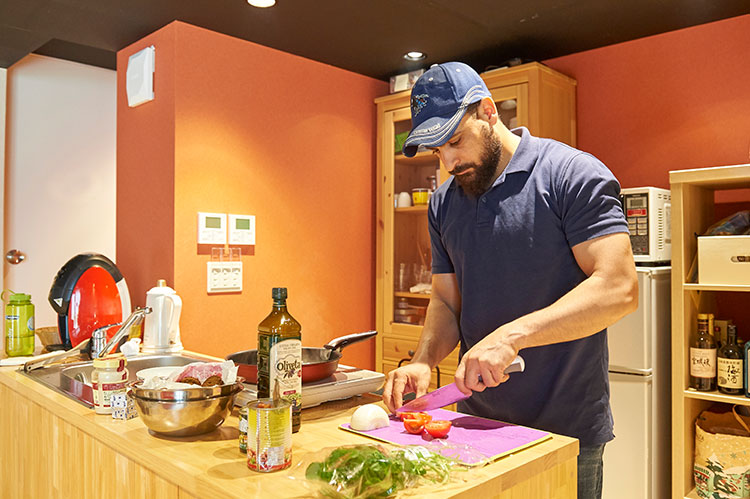
Egyptians eat a hearty breakfast of beans, vegetables, and dairy products. Egypt is a rich agricultural country where many vegetables grow, and in fact, many families keep a cow or water buffalo at home and make their own dairy products using freshly squeezed milk.
“My family had a cow and a water buffalo, and my mother would milk them at around five in the morning to prepare the milk we needed for the day. We made our own butter and cheese too.”
People either fill pita bread with the ingredients laid out on the table and drizzle them with tahini sauce to make sandwiches or take a small portion of each and eat them separately. “Mornings are busy, so we simply grab something in a pita and eat,” Mahmoud said. Nevertheless, the table was covered with lots of colorful ingredients.
“Some people eat toast or oatmeal because of the influence of Western culture, but what is becoming popular again these days is this kind of traditional Egyptian cuisine. People say that old-fashioned food is ‘fashionable’, and it’s popular now in restaurants and other places.”
As for morning beverages, “We drink both tea and coffee,” said Mahmoud. Common drinks include black tea paired with dates [a sweet dried fruit] instead of sugar, rich royal milk tea similar to Indian chai, and Arabic coffee made by boiling coffee grounds in a small pot.
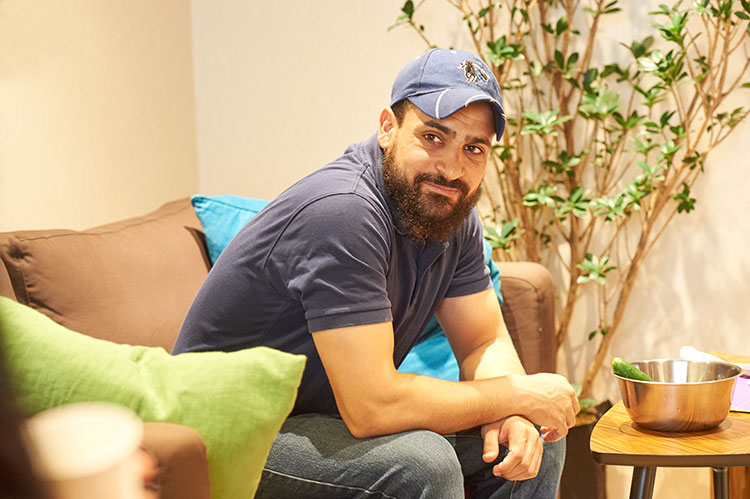

“With Arabic coffee, the coffee grounds get in your mouth, so the taste of coffee stays with you for an hour,” said Mahmoud with a laugh, as he slowly poured coffee into a small cup for Arabic coffee that he inherited from his mother.
Egypt’s unique and rich food culture is readily apparent in this breakfast.
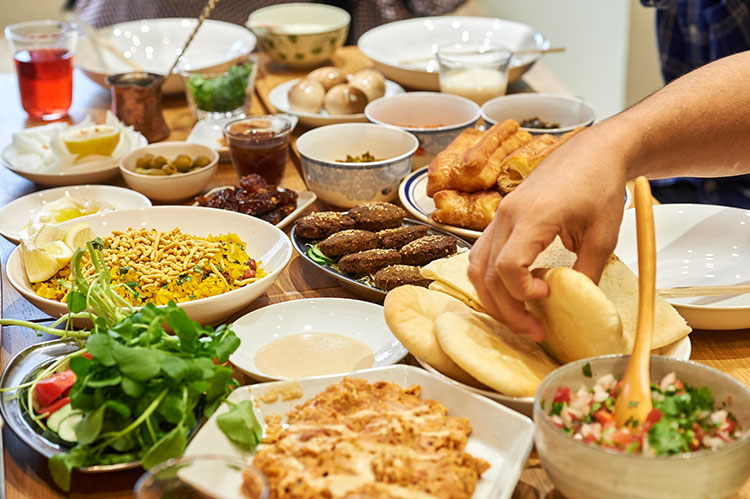
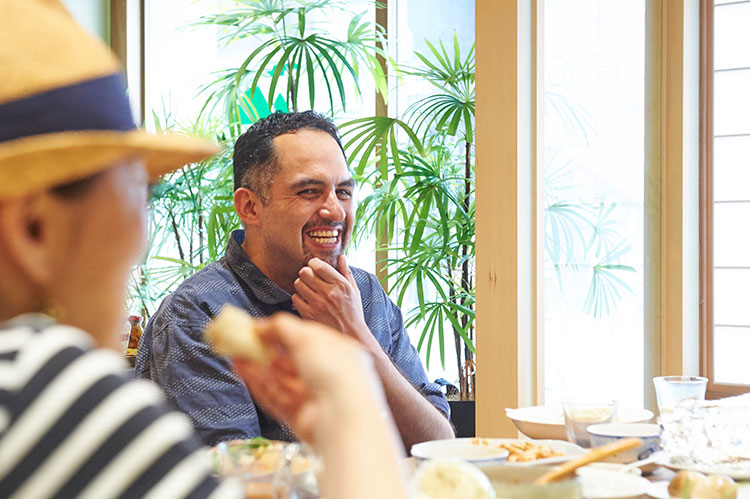

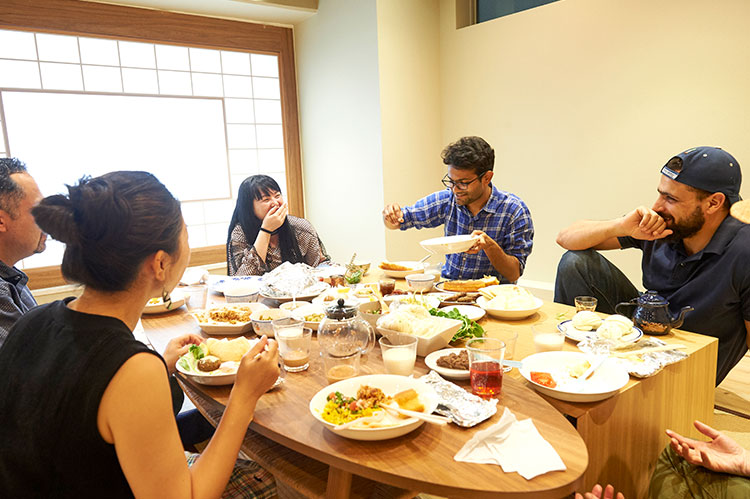
At last, the dishes from the four countries were arranged on the table. Everyone was surprised and delighted by the different flavors, and the conversation grew lively. Although the dishes came from different regions, they were all prepared with the wish to have a good day and to put everyone in a happy mood at breakfast time. The time flew by as everyone traded compliments on the deliciousness of all the dishes.